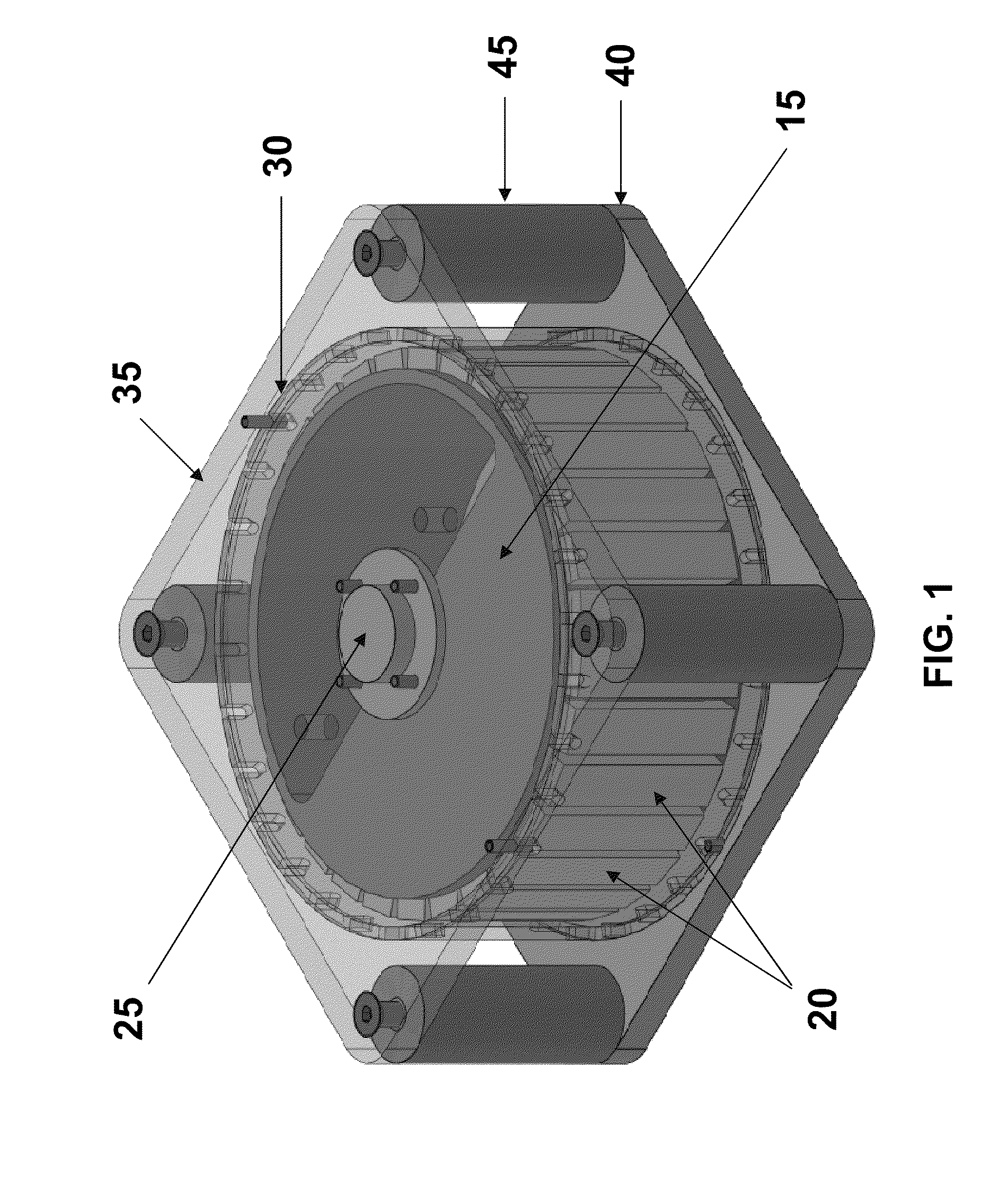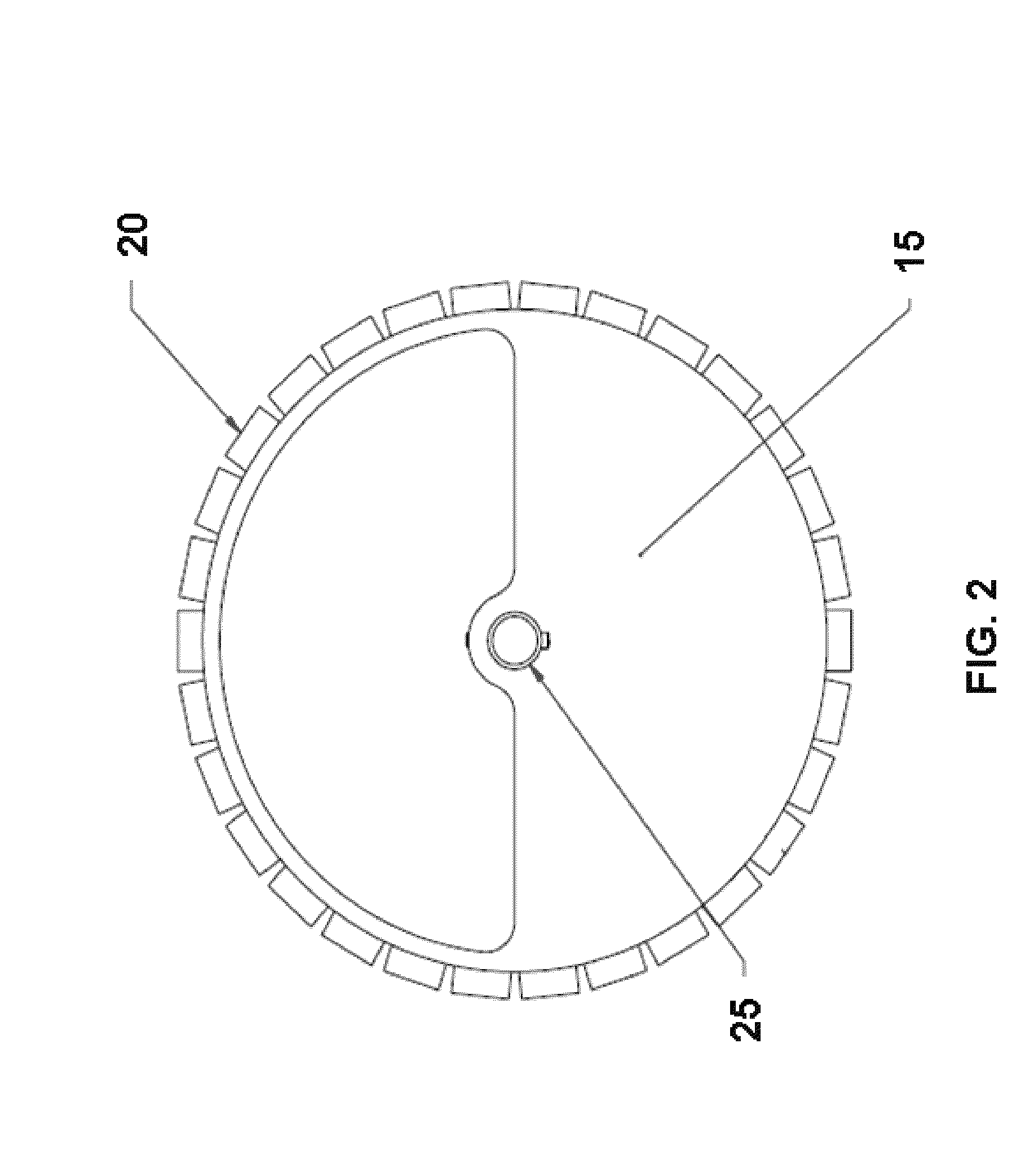Radial flux permanent magnet alternator with dielectric stator block
a permanent magnet alternator and dielectric technology, applied in the direction of machines/engines, magnetic circuits characterised by magnetic materials, electric generator control, etc., can solve the problems of reducing net power output, unable to identify and account, prior art dynamos suffering from non-mechanical sources of rotational resistance, etc., and achieve high operation and maintenance costs.
- Summary
- Abstract
- Description
- Claims
- Application Information
AI Technical Summary
Benefits of technology
Problems solved by technology
Method used
Image
Examples
Embodiment Construction
[0018]In an exemplary embodiment of the present invention, an energy conversion system 10 in a radial flux configuration as shown in FIG. 1 includes at least the following components: a rotor assembly including rotor 15, magnets 20, shaft 25; stator 30; upper plate 35 (optional); lower plate 40 (optional) and spacers 45 (optional). Each of these components is described in more detail herein.
[0019]The energy conversion system 10 is based on the use of permanent magnets in what is known as a radial flux configuration. The configuration is brushless and results in much greater swept coil area in the same footprint as an axial-flux design and is well suited to low rotational speed applications as low as approximately 1 rpm. FIGS. 2 through 4 illustrate top, front and cross-sectional views of the rotor assembly which includes rotor 15, permanent magnets 20 and shaft 25. In a particular embodiment, there are 30 neodymium magnets 20 affixed to the outside of cylindrical steel rotor 15 with...
PUM
 Login to View More
Login to View More Abstract
Description
Claims
Application Information
 Login to View More
Login to View More - R&D
- Intellectual Property
- Life Sciences
- Materials
- Tech Scout
- Unparalleled Data Quality
- Higher Quality Content
- 60% Fewer Hallucinations
Browse by: Latest US Patents, China's latest patents, Technical Efficacy Thesaurus, Application Domain, Technology Topic, Popular Technical Reports.
© 2025 PatSnap. All rights reserved.Legal|Privacy policy|Modern Slavery Act Transparency Statement|Sitemap|About US| Contact US: help@patsnap.com



